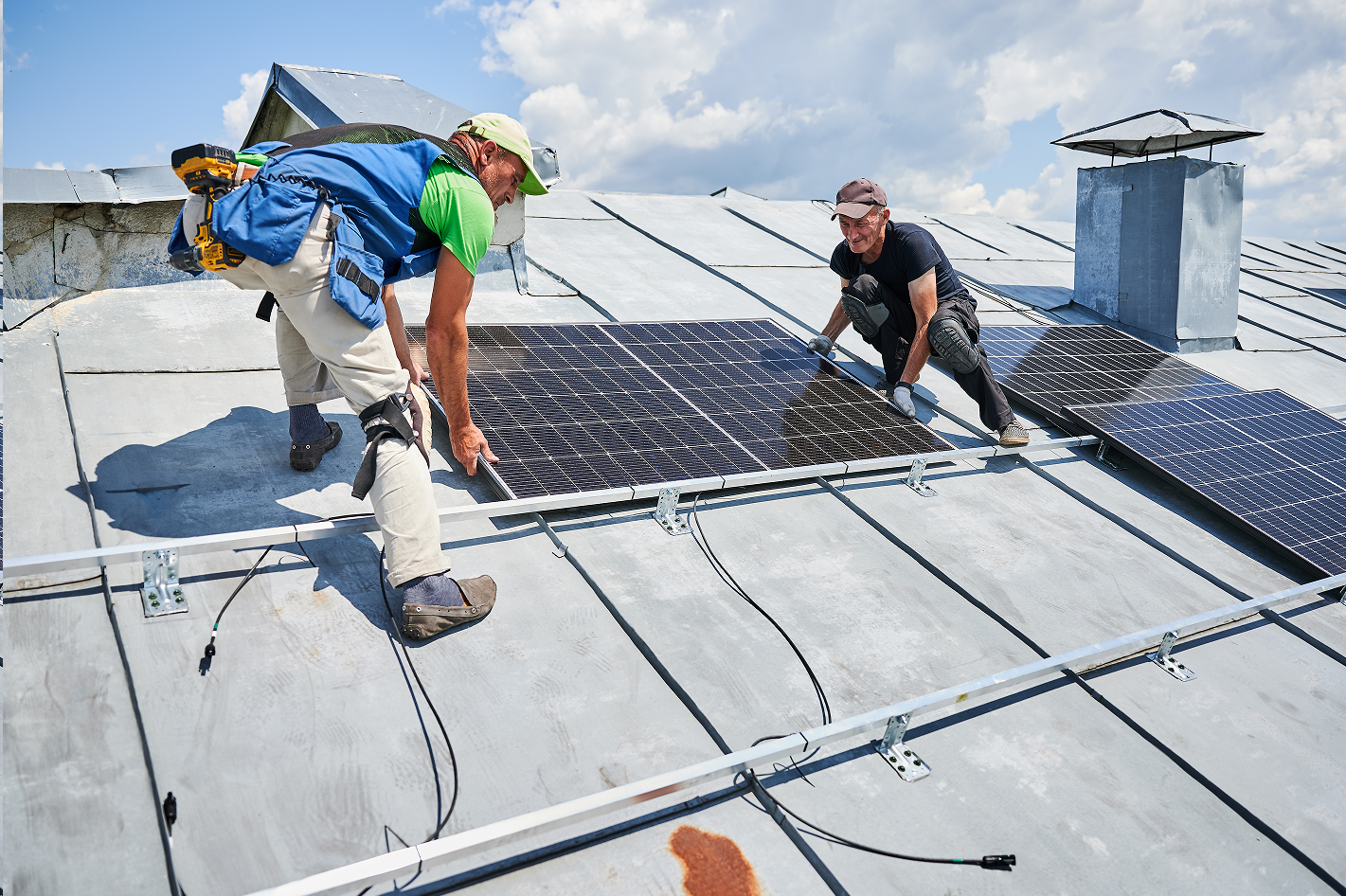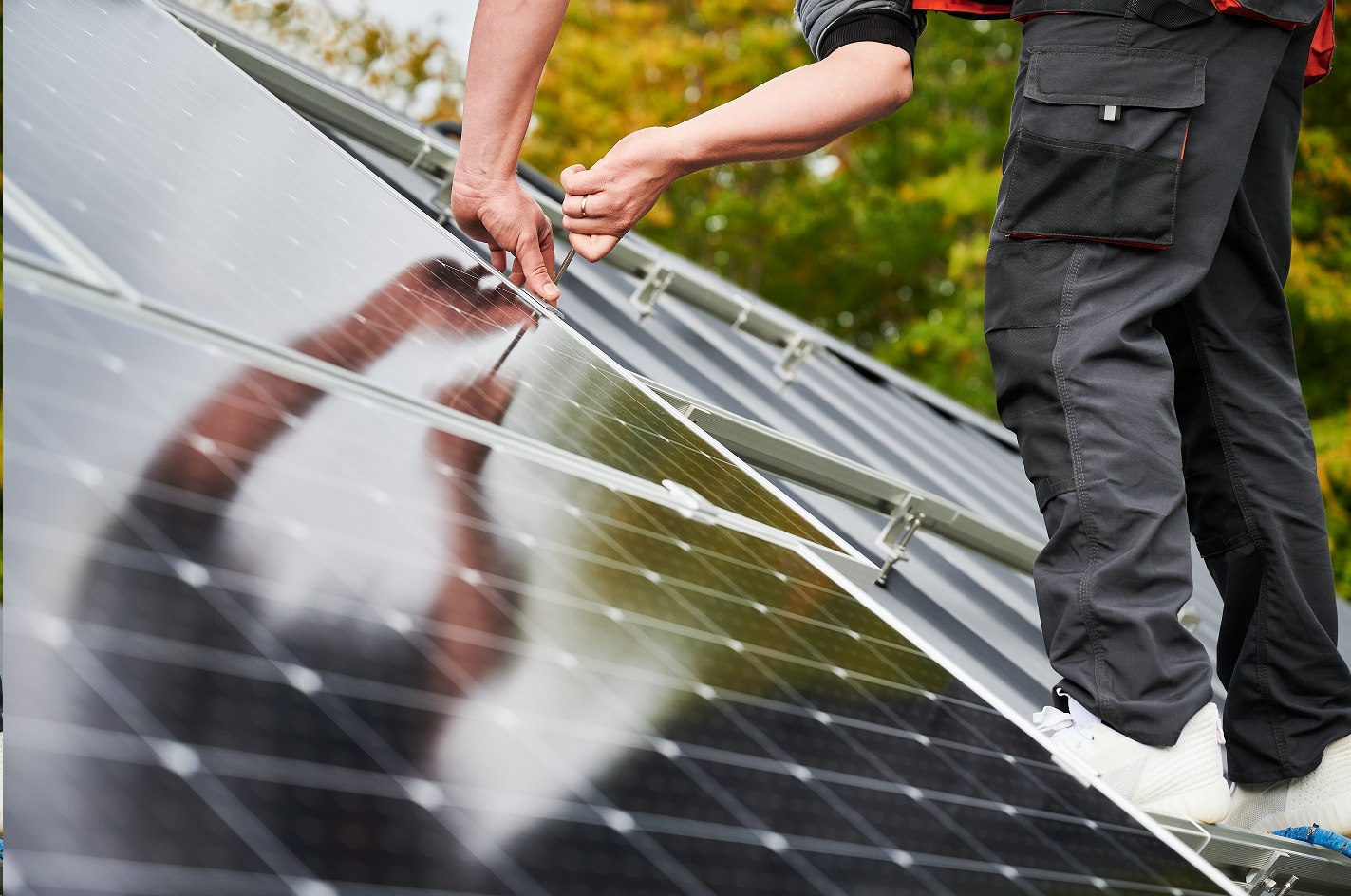|

In typical households, the preferred choices for solar installations are roof-mounted systems, providing added security, fewer shading obstacles, and overall cost-effectiveness compared to ground-mounted alternatives. However, when designing a solar roof-mounted system, certain essential considerations extend beyond electrical norms. Designers must ensure the roof remains waterproof, fire-resistant, structurally robust, and complies with electrical safety requirements.
Let's explore different types of roof-mounted solar configurations:
Flat Roof Mounting:
- Suitable for both commercial and residential settings (if the roof is flat).
- Involves a ballasted concrete structure, similar to ground-mounted systems, allowing modules to be positioned at a specific tilt.
- Solar panels are affixed to the concrete base, reducing costs associated with metal materials for the mounting structure.
- If the system incorporates solar tracking, the aluminum structure's base is secured to the concrete, providing mobility for the solar panels.
Rail-Less Mounting System:
- Emerging as a cost-effective option.
- Utilizes rail brackets, EPDM rubber, and screws for a direct attachment of solar panels to the sloped roof, eliminating the need for rails.
- Dual rack not only proves to be economical but also allows for maneuverability. This enables panels to be placed in either landscape or portrait positions without compromising the overall system.
Railed Mounting System:
- Widely adopted in modern installations.
- Involves attaching solar panels to a single straight line of rails, securely fastened to the rooftop through roof-mounted assemblies, bolts, and screws.
- Dual rack system stands out with its design, enhancing section properties for added reliability.
Shared-Rail Mounting System:
- Similar to railed systems but with a reduced use of rails.
- Features rails positioned in the middle of the array, providing support for two rows of solar panels.
These sloped roof mounting options cater to various needs, from cost-effectiveness to enhanced structural design, offering flexibility and efficiency in harnessing solar energy.
Key Points of Solar Racking on Rooftops:
- Solid Structure: Capable of withstanding load.
- Water Tight: Minimizes penetration to maintain roof integrity.
- Fire and Lightning Protection: Incorporates measures to enhance safety.
- Weight Load: Considerations for the load imposed on the roof.
- Flexible Layout: Allows for accommodating more panels with a versatile arrangement.
These considerations ensure the effectiveness, safety, and longevity of rooftop solar installations, providing a comprehensive approach to solar racking systems.

|
|
